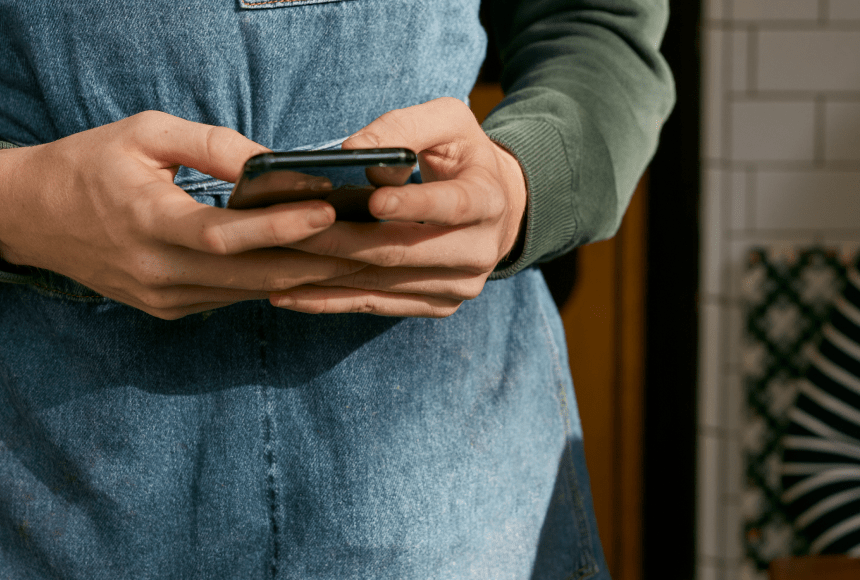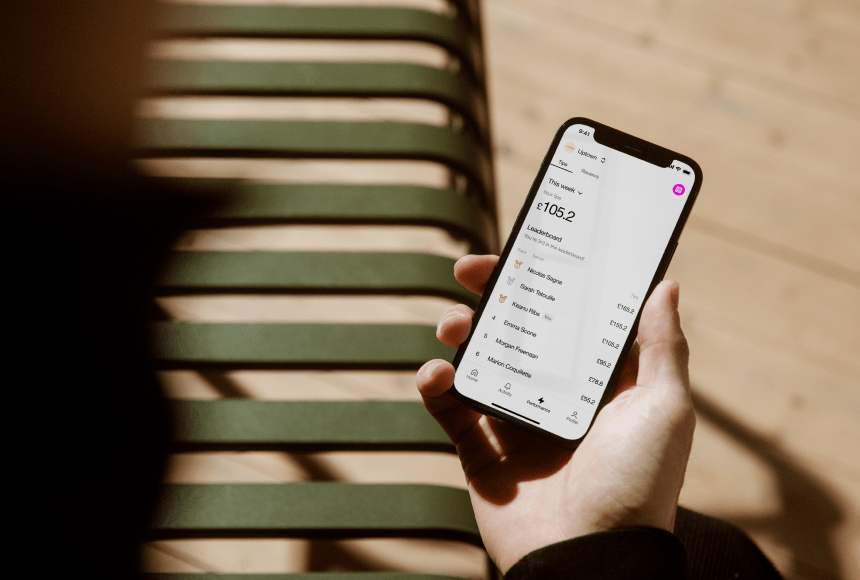
Revolutionising Your Restaurant’s Bottom Line with On-the-Spot Checkout
Why Tableside Payment Is Gaining Momentum
Imagine you’re visiting a packed restaurant on a busy Friday evening. The place is buzzing, delicious aromas float through the air, and every server seems to be juggling multiple tasks at once. Now picture the moment you’ve finished your dessert: you’re ready to pay, but the server is tied up, the card machine is in use, and you’re left waiting, glancing around in hopes of catching someone’s eye.
This traditional end-of-meal routine can feel sluggish, both for diners wanting to leave and for staff attempting to juggle new orders. Tableside payment — allowing guests to settle their bills directly at the table via QR code or handheld device — offers a sleek solution to this perennial pain point. It’s not merely about speed, though. Implementing a modern, convenient checkout method can also have a major impact on two critical factors in your dining room: tip amounts and table turnover.
Let’s explore how on-the-spot payment not only elevates customer satisfaction but also drives up gratuities and frees tables for your next wave of eager guests.
Enhancing the Tipping Experience
Tipping is woven into the UK hospitality scene, though the specifics can vary depending on region and customer preferences. In any case, servers and restaurants alike benefit when a streamlined payment process nudges customers towards a more generous gratuity.
- Less Awkward Waiting:Tableside payment removes those tense moments when diners search for someone to bring the bill. Instead, they can scan a QR code or use a small device at their leisure, reviewing the total and tips without feeling pressured. Fewer logistical hurdles can translate into a calmer, more positive mindset when deciding how much to tip.
- Clear Tip Suggestions:Many on-the-spot payment systems offer easy tip prompts — for example, a choice between 10%, 12.5%, or 15%. By making the tip process smooth and transparent, diners are more likely to pick a higher percentage than they might if they had to fumble around with coins and mental sums.
- Discrete Transaction:Contactless or phone-based payment helps eliminate any embarrassment that can arise if a card machine is in front of the diner, with the server standing by. The diner can privately select their tip, which can encourage generosity.
According to OpenTable (OpenTable restaurant insights), simple, quick payment experiences tend to leave guests with a better overall impression, often reflected in their final tip amount. While many factors influence tipping, from service quality to personal custom, having a frictionless payment method can push the total in your server’s favour.
Speeding Up the Table Turnover Cycle
Improving table turnover is about being more efficient without making diners feel rushed. And that can be a delicate balance. Yet, tableside payment can help accelerate the cycle without leaving anyone with a sense of being hustled out.
- No Waiting for the Bill:Once the meal is finished, diners don’t have to wave frantically for a server to bring the check. A quick scan or a tap is all it takes. When the bill is settled faster, guests can leave sooner if they wish, freeing up the table for the next party.
- Fewer Trips by Staff:Your servers won’t make multiple visits to the table to drop off the bill, wait for card insertion, or fetch receipts. Each freed-up minute can be used to greet new customers, take fresh orders, or deliver dishes. The entire dining room flows more smoothly when your staff can handle tasks beyond just “checkout attendant.”
- Minimised Device Bottlenecks:In many restaurants, a limited number of card machines must be shared among staff. By removing that hardware pinch point, you reduce the queue for the payment terminal, further trimming any delays that slow table turnover.
If you think about how many minutes a typical table spends waiting for payment across an entire shift, the cumulative time can be significant. By shaving even a few minutes from the end of each meal, you potentially fit in an extra party or two during peak hours. That may not sound like much, but it can stack up to substantial gains in daily or weekly revenue.
Elevating Customer Satisfaction and Confidence
We all know that when customers are impressed with a restaurant’s efficiency, they’re more likely to leave positive reviews or become regulars. Tableside payment can be a pleasant surprise that boosts a diner’s overall experience in subtle yet meaningful ways.
- Sense of Control:Diners often appreciate paying at their own pace rather than feeling like they have to chase a server. This independence can give them a sense that your restaurant respects their time and comfort.
- Private, Hassle-Free Transactions:Rather than rummaging through purses or wallets in front of everyone, guests can manage their payment on their own phone or a discreet device. This small shift can help them feel more at ease.
- Immediate Feedback Opportunities:Some systems, like Sunday, invite diners to leave a Google review straight after payment. If they’ve had a stellar experience, they’re more likely to share it online while still riding the wave of satisfaction.
When diners see that your restaurant cares about saving them time, the overall feeling of hospitality is amplified. Happier guests often correlate with better tips, more return visits, and a stronger reputation in your local community.
How Ease of Payment Encourages Higher Gratuities
It’s worth delving a bit deeper into why convenient payment can have a direct correlation with increased tipping:
- Positive Emotions at Checkout:If everything else has gone well, the last thing a guest wants is a painful or drawn-out payment process. By removing that stress, you end on a high note — and tips often reflect that final impression.
- Tip Suggestions:Digital interfaces often show tip options as percentages or small increments. Many diners opt for the “easy choice,” which might be a bit higher than what they’d ordinarily calculate mentally. That subtle nudge can add up.
- Server Gratitude:With fewer administrative tasks to handle, your staff can engage diners warmly, chat about recommended dishes, or provide personal touches. Feeling appreciated and unhurried during the meal can naturally lead diners to tip more generously.
A Harvard Business Review article (Hospitality Trends) notes that these final minutes of a meal hold disproportionate weight in shaping customer loyalty and gratuities, which is why making them as smooth as possible can pay immediate dividends.
Practical Steps to Roll Out Tableside Payment
If you’ve ever considered adopting on-the-spot payment, here’s how to implement it effectively:
- Choose the Right System:Evaluate solutions that integrate smoothly with your POS. Look for easy tip prompts, robust security, and a clear interface. A partner like Sunday can streamline the process, benefiting both staff and guests.
- Train Your Team Thoroughly:Servers should be prepared to explain the new payment method briefly, troubleshoot any hiccups, and reassure those who might not be tech-savvy. When staff feel confident, diners pick up on that positive energy.
- Promote It to Customers:Table signs, menu inserts, or a friendly mention from the host can let people know they can pay via a QR code or device. Emphasise that it’s optional but convenient.
- Gather Feedback:Ask staff how the rollout is going, listen to customers’ thoughts, and be open to small tweaks. Maybe you need bigger signage or a quicker tutorial. Adjust your approach as you learn.
A seamless introduction can make all the difference. If diners see the system as helpful rather than forced, they’re more likely to embrace it from the outset.
Case Study: A Busy Bistro That Shifted to QR Code Payments
Before Implementation
James owns a buzzing French bistro in central London. On weekends, his servers often found themselves juggling card readers for up to eight or nine tables at once. Especially around 8 pm, customers would all request the bill within minutes.
Staff sometimes felt pressured and rushed, and customers had to wait. This meant lower table turnover and occasional guest frustration. The tip amounts were decent, but James suspected they could improve if the end-of-meal process felt less chaotic.
After Implementation
A few months back, James introduced a QR code payment option. Each table now has a neat stand with a scannable code. On top of that, staff mention the system briefly when seating diners.
- Higher Tip Percentages:James noticed a subtle but real rise in average tip amounts, especially on busy nights when people used to wait the longest. He attributes it to the stress-free final steps of the meal.
- Faster Table Turnover:Diners who pay via phone rarely linger after. This has allowed James to seat extra tables on weekend nights, boosting the bistro’s daily revenue.
- Positive Word of Mouth:Customers often mention how convenient it is to settle up quickly, especially in Google reviews or social media posts. That buzz helps attract new patrons.
James’s experience reflects what many restaurant owners discover: tableside payment is about more than technology. It’s about shaping a better experience that benefits servers, management, and, crucially, your guests.
Making the Most of Your Team’s Time
Freeing servers from the demands of physically collecting payments or waiting on terminals can shift the atmosphere in your dining room. Instead of juggling clunky card machines, your staff can focus on:
- Attentive Service: Checking in on diners mid-meal, offering quick refills, and ensuring no plate goes neglected.
- Upselling and Guidance: Suggesting the perfect dessert wine or explaining how the chef sources local ingredients for the special. These thoughtful touches can improve the guest’s culinary adventure.
- Faster Resolution of Issues: If a table needs a dish replaced or has a question, your staff can respond swiftly without being stuck in the payment process at another table.
This realignment from cashier tasks to hospitality tasks can not only improve satisfaction levels but also reduce staff stress. Many servers enjoy hospitality because they thrive on personal interaction, not because they like playing the role of a card machine courier.
Is Tableside Payment Right for Your Restaurant?
While the benefits might sound universally appealing, consider your restaurant’s unique style and clientele. Do you handle frequent, high-volume seatings where speed is crucial? Or do you run a high-end establishment with lengthy tasting menus?
- High-Traffic Eateries: If your lunch crowd or weekend dinner service sees a constant rush, tableside payment is a major boon for turnover and tips.
- Upscale Venues: Even fine-dining spots can find that discreet checkout methods preserve the elegance of a meal’s finale, rather than forcing diners to hail a server for the bill.
- Small Cafés or Pubs: For quick-service cafés and pubs, the opportunity for self-checkout aligns perfectly with casual, grab-and-go vibes. This can reduce queues and free staff to manage the bar or attend to new arrivals.
Any restaurant that wants to reduce friction at payment time might see real gains from on-the-spot checkout. The key is to maintain a personal, friendly style while offering the convenience of technology.
Looking Ahead: Technology as an Ally
Payments are evolving rapidly, and restaurants that anticipate shifts can differentiate themselves. QR code or device-based payments resonate with customers who are used to scanning and tapping on their smartphones all day. By adopting such options now, you align with modern consumer behaviours and set a forward-thinking tone.
Plus, as competition grows, guests may increasingly choose restaurants that let them pay efficiently. Providing a strong tip prompt or letting customers handle the transaction from their phone can build loyalty, especially among younger, tech-savvy diners.
Capitalising on a Faster, Friendlier Checkout
Ultimately, the link between tableside payment, tip growth, and swifter table turnover is about removing unnecessary friction from the dining experience. Guests leave with a pleasant last impression, staff can spend more time being hosts instead of card carriers, and you can seat new tables without delays caused by payment backlogs.
The shift might feel small — just a different way to settle the bill — yet it has ripple effects that can transform your entire front-of-house flow. Diners are less likely to get restless, more likely to tip well, and will probably share their positive thoughts online. Meanwhile, you’ll see the practical benefits of maximising each table’s potential in a busy schedule.
If you’re pondering whether to make the leap, take a moment to consider how your restaurant might look with fewer payment-related logjams. Picture your staff forging connections with patrons, your tables turning over without bottlenecks, and your tipping averages inching higher. Tableside payment can help you bring that vision to life, one friendly, efficient checkout at a time.
Find out more today
Drop us your details below and we’ll reach out within the next 24
Get the full, detailed picture.
sunday elevates your business with insightful data, instant feedback and precise analytics.


